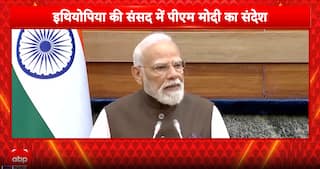Microtransactions In Gaming: Striking A Balance Between Profit And Player Experience
Microtransactions have become a cornerstone of the social gaming experience, transforming how players engage with virtual worlds. But it's more than just a cash grab.

By Ananay Jain
Microtransactions have sparked significant debate within the gaming community. Initially seen as a cash grab, they have evolved into an essential revenue stream for developers. With rising development costs and shifting consumer expectations, microtransactions have become a necessary tool for many studios. This article explores the delicate balance between monetisation and player satisfaction, examining how microtransactions have reshaped the financial landscape of the gaming sector.
Microtransactions have become a cornerstone of the social gaming experience, transforming how players engage with virtual worlds. These small, in-game purchases are a highly lucrative business model, enabling developers to generate substantial revenue while enhancing the gaming experience for players. They create a symbiotic relationship, benefiting both parties: developers gain crucial financial support for ongoing game development and updates, while players enjoy personalised experiences and additional content at affordable prices.
While microtransactions significantly impact revenue, they also raise concerns about ethical gameplay, player psychology, and the overall fairness of the gaming industry. Ethical issues such as transparency, fairness, and potential exploitation, especially of vulnerable players like children, are prominent. Practices like “pay-to-win” mechanics and gambling-like loot boxes can lead to inequality and addictive behaviour.
Developers must prioritise consumer well-being by ensuring clear and transparent pricing structures and avoiding manipulative tactics. By striking this balance, microtransactions can sustain the economic viability of developers while enriching the player experience, ensuring games remain engaging and continue to evolve in a rapidly changing landscape.
Understanding Microtransactions
Microtransactions are small purchases made within a game, typically using real-world currency, that provide players with various in-game advantages or cosmetic enhancements. These purchases can range from buying virtual currency, unlocking additional levels or characters, acquiring special items, or even speeding up the progression of gameplay.
A prime example of microtransactions is found in the popular mobile game Candy Crush Saga. Players are given the option to purchase additional lives or boosters, which can help them progress through challenging levels. While these purchases are entirely optional, they offer players a convenient way to overcome obstacles and continue their gameplay without having to wait for lives to regenerate naturally.
Evolution of Microtransactions from DLC to In-Game Purchases
Microtransactions began as a straightforward concept, primarily centred around downloadable content (DLC) and cosmetic upgrades. However, as the gaming landscape evolved towards free-to-play (F2P) models and live-service games, these transactions became central to revenue generation. Titles like Fortnite, League of Legends, and Genshin Impact illustrate how offering free access to games can attract large player bases, with in-game purchases driving significant profits. This shift reflects a broader industry trend, moving away from traditional one-time purchases toward a model that emphasises ongoing engagement and community building.
Currently, over 90 per cent of mobile games utilise the freemium model, allowing players to access the game for free while incorporating various in-app purchases (IAPs). Remarkably, although only about 1.9 per cent of players spend money on in-game content, they contribute up to 90 per cent of total mobile game revenue. In free-to-play games, players may encounter situations where they must wait days or even weeks for upgrades, leading some to label these experiences as "pay-to-win."
While casual players might accept this pacing, around 10 per cent choose to expedite their progress by purchasing in-game currency or items, with roughly 6.5 per cent developing a habit of spending more frequently. This dynamic highlights a key aspect of microtransactions: they often compel players to trade time for money, reshaping how gaming experiences are valued.
Role of Microtransactions in Achieving Financial Viability for Game Developers
For many developers, particularly indie studios and smaller teams, microtransactions have become a vital source of revenue in an increasingly competitive market. The introduction of subscription models and battle passes has further solidified this financial foundation, providing developers with predictable income streams that support long-term sustainability.
The rising costs of game development—driven by the increasing complexity of graphics, artificial intelligence, and immersive storytelling—have placed significant financial strain on studios. Microtransactions offer a way to alleviate these pressures by generating a steady income that funds ongoing development, such as regular updates, new features, and expansions, all of which are essential to keeping players engaged.
Additionally, the revenue generated from microtransactions enables more thorough quality assurance processes, improving game quality through detailed testing and refinement. They also support community engagement by funding initiatives such as seasonal events and community-driven content that foster player interaction and loyalty.
As modern games shift from being one-time purchases to service-based models, titles like Fortnite and Call of Duty: Warzone exemplify this change by offering continuous updates and new content to maintain player interest. Microtransactions are integral to this model, ensuring the funding needed for the ongoing creation of new maps, modes, and events, which keep the experience fresh and engaging.
They also help maintain the infrastructure necessary for stable and responsive online play, which is crucial for player satisfaction. By leveraging microtransactions effectively, developers not only secure their financial viability but also cultivate long-term player engagement and community growth. Striking this balance is key to navigating the rapidly evolving gaming industry.
Balancing Monetisation, Ethics and Player Satisfaction
While the financial benefits of microtransactions are evident, they also raise concerns regarding player satisfaction. Critics argue that aggressive monetisation strategies can alienate players, leading to frustration and disillusionment. To strike an effective balance between revenue generation and maintaining a positive player experience, developers should consider several key strategies. Firstly, they should embrace player-centric approaches, focusing on microtransactions that enhance, rather than detract from, the gaming experience. Successful titles, such as Overwatch and Fortnite, have prioritised cosmetic items and optional purchases — like skins and emotes — that do not affect gameplay or competitive balance, allowing players to personalise their experience without altering performance.
Equally important is fostering transparency and clear communication with players. Developers should be open about the nature of microtransactions, including what players can expect and how these purchases impact gameplay. When players feel informed and valued, they are more likely to engage positively with microtransactions. Consumer protection is another vital consideration, especially regarding loot boxes, which have drawn criticism for resembling gambling. The lack of transparency over what players will receive can lead to excessive spending and addictive behaviours. Some countries have already begun regulating loot boxes as a form of gambling, to safeguard consumers, particularly younger players.
Implementing fair pricing models is crucial for maintaining player trust. Developers should avoid pay-to-win scenarios and ensure that all purchases offer genuine value, reinforcing a positive relationship with the player community. Actively engaging with players and gathering feedback is also essential, as it allows developers to create content that resonates with their audience, enhancing overall satisfaction. A balanced approach to monetisation ensures that players can enjoy the game without feeling pressured to spend excessively, fostering a more enjoyable and inclusive experience. Finally, introducing limited-time events can further promote engagement by generating excitement around microtransactions. Seasonal events that offer exclusive items can create a sense of reward and urgency, making spending feel like a valuable and enjoyable part of the experience, rather than an exploitative tactic.
Ultimately, the key to balancing monetisation and player satisfaction lies in understanding players’ perspectives. By prioritising fairness, transparency, and community engagement, developers can implement microtransactions that drive revenue while enriching the overall gaming experience. This approach not only satisfies players but also fosters long-term loyalty and success for developers.
(The author is the Director, Governance Risk & Operations, Grant Thornton)
Disclaimer: The opinions, beliefs, and views expressed by the various authors and forum participants on this website are personal and do not reflect the opinions, beliefs, and views of ABP Network Pvt. Ltd.






































